WD40 car maintenance hacks – who knew a can of this stuff could be your secret weapon for keeping your ride running smoothly and looking its best? I’ll be honest, I used to think WD40 was just for squeaky hinges, but boy, was I wrong! This seemingly simple lubricant has a surprising number of uses when it comes to car care, and I’m excited to share some of my favorite DIY tricks with you.
While WD40 wasn’t originally designed for automotive use (it was created in 1953 to repel water and prevent corrosion on missiles!), its versatility quickly became apparent. Think of it as the Swiss Army knife of car maintenance – a multi-purpose tool that can tackle a surprising range of problems. From loosening rusted bolts to removing stubborn tar, WD40 has become a staple in garages around the world.
Why do you need these WD40 car maintenance hacks? Well, let’s face it, car maintenance can be expensive and time-consuming. But with a few clever tricks, you can save money and keep your car in tip-top shape without breaking the bank. I’m going to show you how to use WD40 to tackle common car problems, from cleaning your engine to protecting your paint. Get ready to unleash the power of this amazing product and become a car care pro!
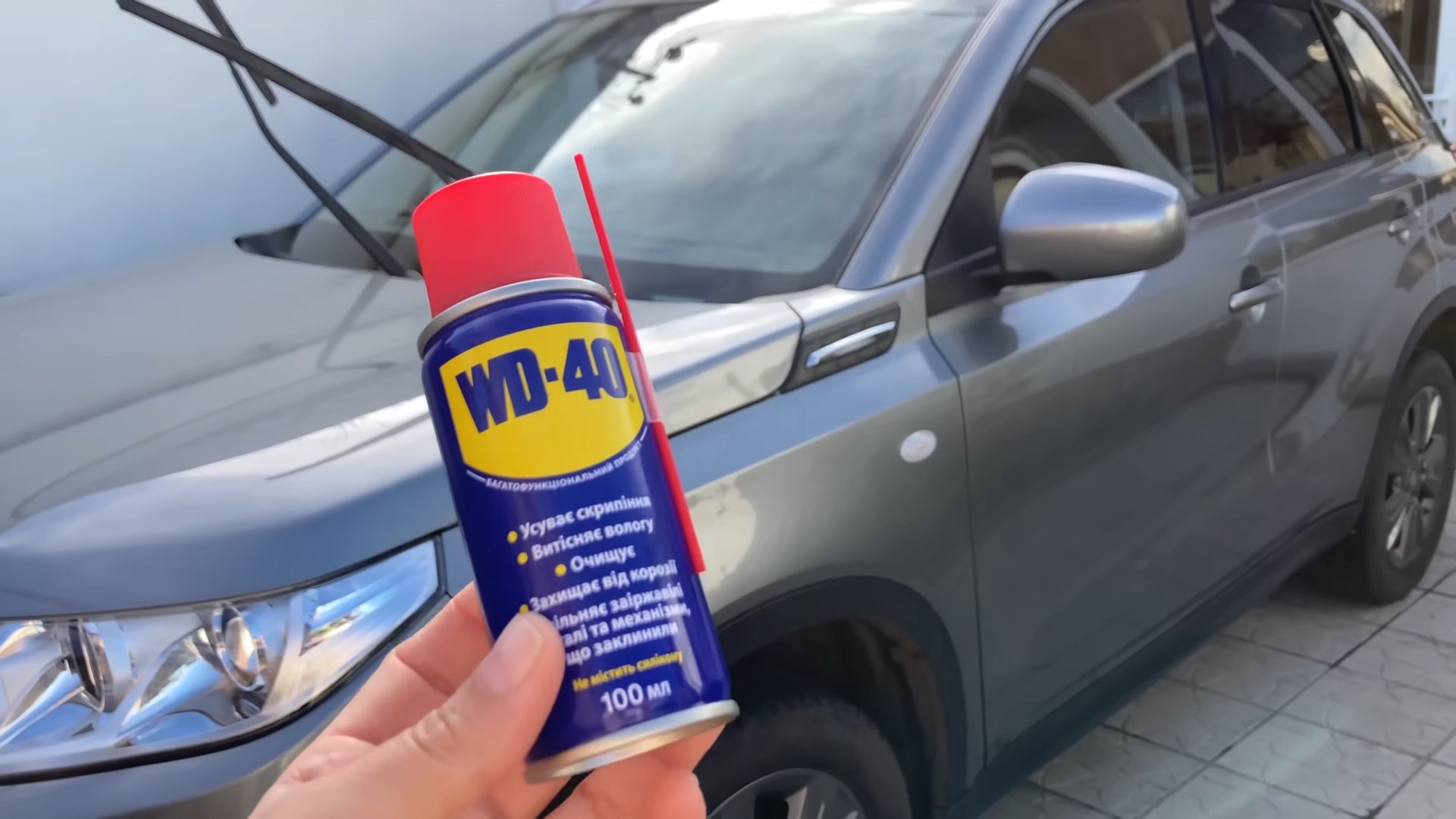
Unlock the Power of WD-40: Car Maintenance Hacks You Need to Know
Hey there, fellow car enthusiasts! I’m always on the lookout for ways to keep my ride running smoothly without breaking the bank. And guess what? I’ve discovered the magic of WD-40 for more than just squeaky hinges. This stuff is a lifesaver when it comes to car maintenance, and I’m excited to share some of my favorite hacks with you. Get ready to be amazed by the versatility of this household staple!
Loosening Rusted Bolts and Nuts
Let’s face it, dealing with rusted bolts and nuts is a pain. But WD-40 can make this task a whole lot easier.
What you’ll need:
* WD-40
* Wrench or socket set
* Wire brush (optional)
* Safety glasses
Step-by-step instructions:
1. Safety First: Put on your safety glasses to protect your eyes from any flying debris.
2. Clean the Area: If the bolt or nut is covered in dirt or grime, use a wire brush to clean it off as much as possible. This will help the WD-40 penetrate better.
3. Apply WD-40: Generously spray WD-40 directly onto the rusted bolt or nut. Make sure to get it into the threads as much as possible.
4. Let it Soak: This is the key! Let the WD-40 soak for at least 15-20 minutes. For severely rusted bolts, you might even want to let it soak overnight. The longer it soaks, the better it will work.
5. Try to Loosen: After soaking, try to loosen the bolt or nut with your wrench or socket set. Apply steady pressure, and avoid jerking motions, which can strip the bolt head.
6. More WD-40 (If Needed): If the bolt or nut is still stuck, apply another dose of WD-40 and let it soak for another 10-15 minutes.
7. Gentle Tapping: Sometimes, gently tapping the bolt head with a hammer can help break the rust’s grip. Be careful not to damage the bolt head.
8. Repeat if Necessary: Keep repeating steps 5-7 until the bolt or nut finally comes loose. Patience is key!
9. Clean Up: Once the bolt or nut is removed, clean the threads with a wire brush and apply some anti-seize lubricant before reassembling. This will prevent future rusting.
Cleaning Road Tar and Grime
Road tar and grime can be a real eyesore on your car’s paint. Luckily, WD-40 is an excellent cleaner for removing these stubborn deposits.
What you’ll need:
* WD-40
* Soft microfiber cloths
* Car wash soap
* Water
* Bucket
Step-by-step instructions:
1. Wash the Area: Before applying WD-40, wash the affected area with car wash soap and water to remove any loose dirt or debris. This will prevent scratching the paint.
2. Dry the Area: Thoroughly dry the area with a clean microfiber cloth.
3. Apply WD-40: Spray WD-40 directly onto the tar or grime. Don’t overdo it; a light coating is usually enough.
4. Let it Sit: Allow the WD-40 to sit for a few minutes to soften the tar or grime.
5. Wipe Away: Gently wipe away the tar or grime with a clean microfiber cloth. Use a circular motion and apply light pressure.
6. Repeat if Necessary: For stubborn spots, repeat steps 3-5 until the tar or grime is completely removed.
7. Wash Again: After removing the tar or grime, wash the area again with car wash soap and water to remove any WD-40 residue.
8. Dry Thoroughly: Dry the area thoroughly with a clean microfiber cloth.
9. Wax (Optional): For added protection, you can apply a coat of wax to the cleaned area.
Protecting Electrical Connections
Moisture can wreak havoc on your car’s electrical connections, leading to corrosion and malfunctions. WD-40 can help protect these connections and prevent problems.
What you’ll need:
* WD-40
* Clean microfiber cloth
* Electrical contact cleaner (optional)
Step-by-step instructions:
1. Disconnect the Connection: Before working on any electrical connection, disconnect it to prevent short circuits.
2. Clean the Connection: If the connection is dirty or corroded, clean it with electrical contact cleaner. Follow the instructions on the cleaner’s label.
3. Dry the Connection: Allow the connection to dry completely.
4. Apply WD-40: Lightly spray WD-40 onto the connection.
5. Wipe Away Excess: Use a clean microfiber cloth to wipe away any excess WD-40. You only need a thin coating to protect the connection.
6. Reconnect the Connection: Reconnect the electrical connection.
7. Test: Test the connection to make sure it’s working properly.
Removing Sticky Residue
Whether it’s from old stickers, tape, or tree sap, sticky residue can be a real pain to remove from your car’s paint or windows. WD-40 to the rescue!
What you’ll need:
* WD-40
* Soft microfiber cloths
* Plastic scraper (optional)
* Car wash soap
* Water
* Bucket
Step-by-step instructions:
1. Apply WD-40: Spray WD-40 directly onto the sticky residue.
2. Let it Soak: Allow the WD-40 to soak for a few minutes to soften the residue.
3. Wipe Away: Gently wipe away the residue with a clean microfiber cloth.
4. Use a Scraper (If Needed): For stubborn residue, you can use a plastic scraper to gently lift it off the surface. Be careful not to scratch the paint or glass.
5. Repeat if Necessary: Repeat steps 1-4 until the residue is completely removed.
6. Wash the Area: Wash the area with car wash soap and water to remove any WD-40 residue.
7. Dry Thoroughly: Dry the area thoroughly with a clean microfiber cloth.
Lubricating Door Hinges and Locks
Squeaky door hinges and sticky locks are annoying, but WD-40 can quickly silence the squeaks and free up the locks.
What you’ll need:
* WD-40
* Straw applicator (usually included with WD-40)
* Clean microfiber cloth
Step-by-step instructions:
1. Apply WD-40 to Hinges: Attach the straw applicator to the WD-40 nozzle. Spray WD-40 directly into the door hinges, focusing on the moving parts. Open and close the door several times to work the lubricant into the hinges.
2. Apply WD-40 to Locks: Insert the straw applicator into the keyhole of the lock. Spray a small amount of WD-40 into the lock cylinder. Insert and remove the key several times to distribute the lubricant.
3. Wipe Away Excess: Use a clean microfiber cloth to wipe away any excess WD-40 from the hinges and locks.
Preventing Rust
WD-40 can also be used to prevent rust on metal surfaces.
What you’ll need:
* WD-40
* Clean microfiber cloth
Step-by-step instructions:
1. Clean the Surface: Make sure the metal surface is clean and dry.
2. Apply WD-40: Lightly spray WD-40 onto the metal surface.
3. Wipe Away Excess: Use a clean microfiber cloth to wipe away any excess WD-40. You only need a thin coating to protect the surface.
4. Reapply Periodically: Reapply WD-40 every few months, or as needed, to maintain the protective coating.
Cleaning Spark Plugs
Dirty spark plugs can cause your engine to misfire and run poorly. WD-40 can help clean them up.
What you’ll need:
* WD-40
* Wire brush
* Clean microfiber cloth
* Spark plug socket
Step-by-step instructions:
1. Remove the Spark Plugs: Use a spark plug socket to carefully remove the spark plugs from your engine.
2. Apply WD-40: Spray WD-40 onto the spark plug electrodes and threads.
3. Clean with
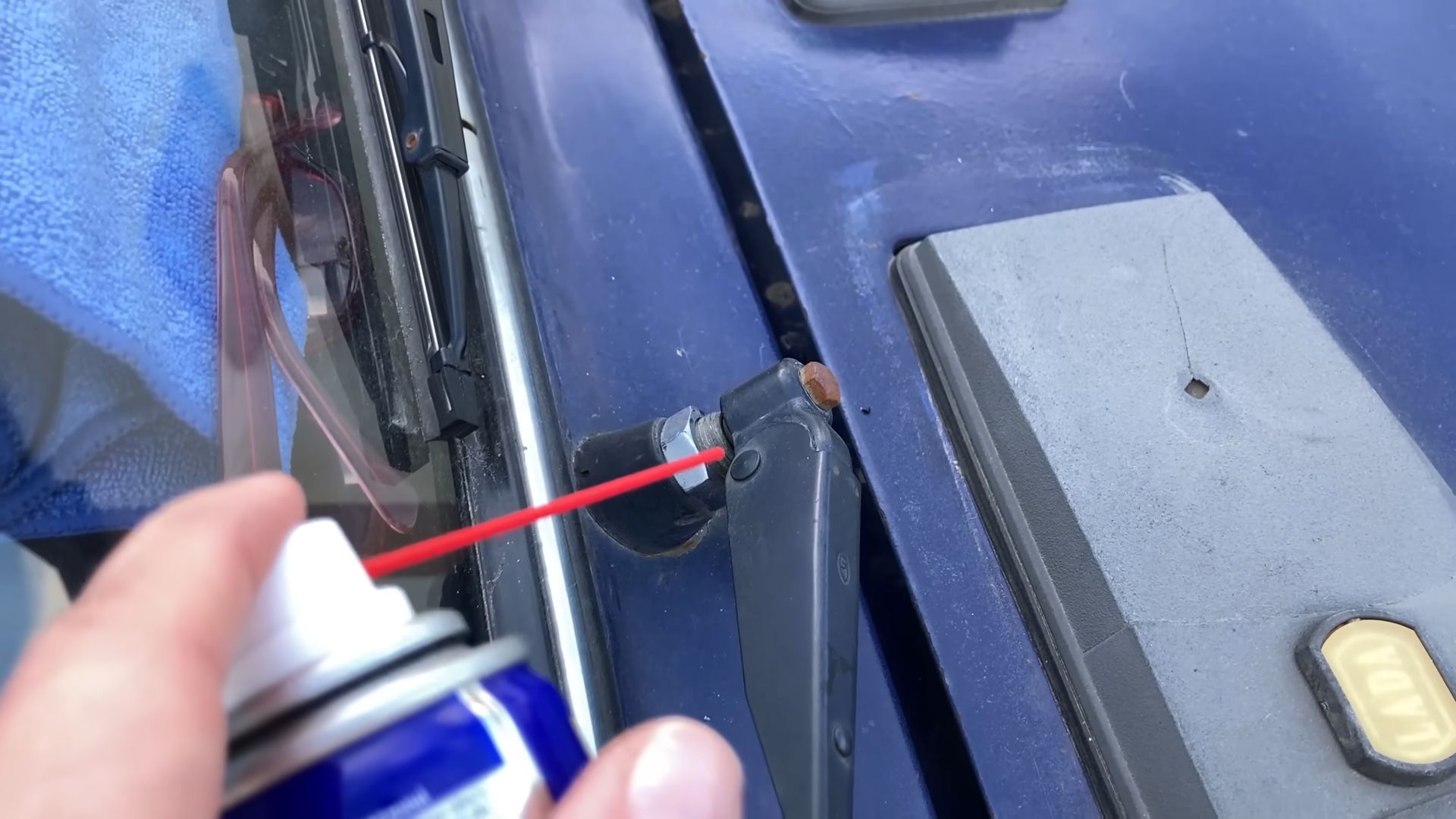
Conclusion
So, there you have it! These WD40 car maintenance hacks are not just clever tricks; they’re game-changers that can save you time, money, and a whole lot of frustration. From banishing stubborn tar and grime to silencing those annoying squeaks and protecting your car’s exterior, WD40 proves its versatility extends far beyond the garage. It’s a readily available, affordable solution for a multitude of automotive woes.
Why is this DIY approach a must-try? Because it empowers you to take control of your car’s upkeep. You don’t need to be a seasoned mechanic to benefit from these simple applications. Imagine the satisfaction of effortlessly removing bug splatter after a long road trip, or the relief of a smoothly operating door hinge after a quick WD40 treatment. These small victories add up, contributing to a better driving experience and potentially extending the life of your vehicle.
But don’t stop there! Experiment with these techniques and discover even more ways WD40 can simplify your car care routine. For instance, try using WD40 on your windshield wipers to improve their performance and prevent streaking. You can also apply it to your car’s battery terminals to prevent corrosion. Remember to always test WD40 on an inconspicuous area first, especially on painted surfaces, to ensure it doesn’t cause any adverse reactions.
Consider these variations:
* Rust Prevention Boost: After applying WD40 to prevent rust, consider adding a thin layer of car wax for added protection, especially in areas prone to moisture.
* Interior Detailing Aid: While WD40 is fantastic for exterior tasks, use it sparingly and cautiously on interior components. A small amount can help remove scuff marks from plastic trim, but always test it in an unseen area first and avoid using it on leather or fabric.
* Winter Weather Warrior: Before winter hits, spray WD40 on door locks and hinges to prevent them from freezing. This can save you a lot of hassle on those cold mornings.
We’re confident that once you experience the benefits of these WD40 car maintenance hacks, you’ll wonder how you ever managed without them. It’s a simple, effective, and surprisingly versatile tool that every car owner should have in their arsenal.
So, go ahead, give these tricks a try! We’re eager to hear about your experiences. Share your successes, your discoveries, and any variations you come up with in the comments below. Let’s build a community of savvy car owners who are making the most of this readily available and incredibly useful product. Your insights could help others discover new and innovative ways to keep their vehicles running smoothly and looking their best. Don’t forget to share this article with your friends and family who might also benefit from these WD40 car maintenance hacks!
Frequently Asked Questions (FAQ)
Is WD40 safe to use on all car surfaces?
While WD40 is generally safe for use on most metal and some plastic surfaces, it’s crucial to exercise caution and test it in an inconspicuous area before applying it liberally. Avoid using WD40 on painted surfaces, especially if you’re unsure of the paint’s composition or condition. Prolonged exposure to WD40 can potentially damage certain types of paint or clear coats. Similarly, avoid using WD40 on rubber components, as it can cause them to degrade over time. Always read the WD40 product label for specific warnings and recommendations.
Can WD40 damage my car’s paint?
Yes, WD40 can potentially damage your car’s paint, especially if it’s left on for an extended period or if the paint is already compromised. The solvents in WD40 can soften or dissolve certain types of paint, leading to discoloration, streaking, or even peeling. To minimize the risk of damage, always test WD40 on a small, hidden area of the paint before applying it to a larger surface. If you notice any adverse reactions, such as discoloration or softening, discontinue use immediately. If you do use WD40 on painted surfaces, be sure to wipe it off thoroughly with a clean, soft cloth as soon as possible.
Is WD40 a good lubricant for car parts?
WD40 is primarily a water displacement and penetrating oil, not a long-term lubricant. While it can provide temporary lubrication, it’s not designed to withstand high pressure or extreme temperatures. For long-lasting lubrication of car parts, such as hinges, bearings, and joints, it’s best to use a dedicated automotive lubricant, such as grease or oil. WD40 can be used to loosen rusted or seized parts before applying a proper lubricant.
How often should I apply WD40 to my car?
The frequency of WD40 application depends on the specific application and environmental conditions. For rust prevention, you may need to reapply WD40 every few months, especially in areas with high humidity or exposure to salt. For squeaky hinges or locks, a single application may last for several weeks or months. Regularly inspect the treated areas and reapply WD40 as needed to maintain its effectiveness.
Can I use WD40 to clean my car’s engine?
While WD40 can be used to clean certain parts of your car’s engine, it’s not recommended for cleaning the entire engine bay. WD40 can attract dirt and grime, which can potentially damage sensitive engine components. If you do use WD40 to clean engine parts, be sure to apply it sparingly and wipe it off thoroughly with a clean cloth. Avoid spraying WD40 directly onto electrical components or wiring. For general engine cleaning, it’s best to use a dedicated engine degreaser.
What are the best alternatives to WD40 for car maintenance?
There are several alternatives to WD40 for car maintenance, depending on the specific application. For lubrication, consider using grease, oil, or silicone-based lubricants. For rust prevention, you can use rust inhibitors or protectants. For cleaning, you can use dedicated car cleaning products, such as degreasers, tar removers, and bug removers. The best alternative will depend on the specific task and your personal preferences.
Can WD40 remove scratches from my car?
WD40 can temporarily mask minor scratches on your car’s paint, but it will not permanently remove them. The oil in WD40 fills in the scratches, making them less visible. However, the effect is temporary and will fade over time. For permanent scratch removal, you’ll need to use a dedicated scratch remover or polishing compound.
Is WD40 safe for my car’s tires?
It is generally not recommended to use WD40 on your car’s tires. WD40 can degrade the rubber compound of the tires, potentially leading to cracking, dry rot, and reduced grip. Additionally, WD40 can make the tires slippery, which can compromise your car’s handling and braking performance. For tire cleaning and maintenance, it’s best to use dedicated tire cleaners and protectants.

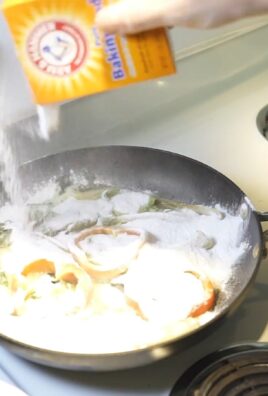
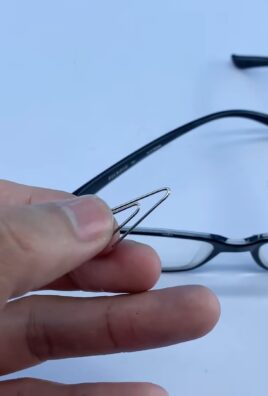
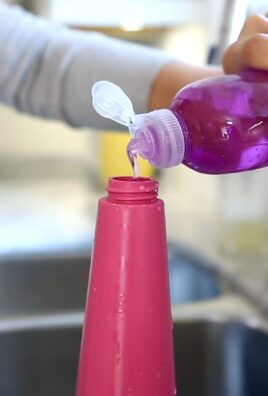
Leave a Comment